Much of our recent trip to the cities of Kyoto and Nara was planned ahead of time, however, we did have a couple unplanned visits we did that both worked out very well. One of them was the ancient Buddhist temple Horyuji. Horyuji is ancient, even by the standards of Buddhist temples in Japan. It was founded in 607, at a time when the early Japanese Imperial court was first establishing relations with China, and the Korean peninsula.
This is important because Horyuji shows a lot of elements imported from “Kudara” (百済), which was the Japanese word for the Korean kingdom of Baekje,1 and the wider Korean peninsula as a whole. This was a time when the Korean peninsula was not one country, but three major kingdoms, all ethnically Korean, along with several minor fiefdoms, each fighting for survival. Baekje was a particularly rich and developed country with close contacts with Tang-dynasty China, and also with the fledgling Japanese “Yamato” court. It was through Baekje that Buddhism first came to Japan, along with a lot of cultural and technical know-how from the continent. Japan, for its part, often sent military aid and such to help defend Baekje from its rivals.
In any case, Horyuji as a very old temple represents a snapshot in time when Chinese and Korean influences were very strong. The architecture, statues and such all show a combination of local, and imported influences. Further, because the temple was one of several founded by the semi-legendary Prince Shotoku, the temple is a testament to his forward-thinking efforts to reform Japan, in contrast to the reactionary Mononobé Clan whom he defeated in battle.
However, travel warning: Horyuji is kind of out of the way from modern Nara. We had just finished our trip to Todaiji, and with some time to spare, my wife remember a haiku she had learned in school that featured Horyuji. However, it turns out that Horyuji was in a pretty isolated area outside of modern Nara, so getting there from downtown took a 30 minute taxi ride at a cost of ¥7000. We decided to go late in the afternoon, and the taxi driver was noticeably concerned about us heading there so late in the day, but was our only chance to go, so we risked it.2
Horyuji contains several treasure houses, and a museum, with countless artifacts from early Japanese-Buddhist history. Unfortunately, like many temples in Japan cameras are often not allowed, however, the website has many excellent photographs, so I highly recommend perusing the English website.
The temple complex of Horyuji was considerably larger than I first expected:
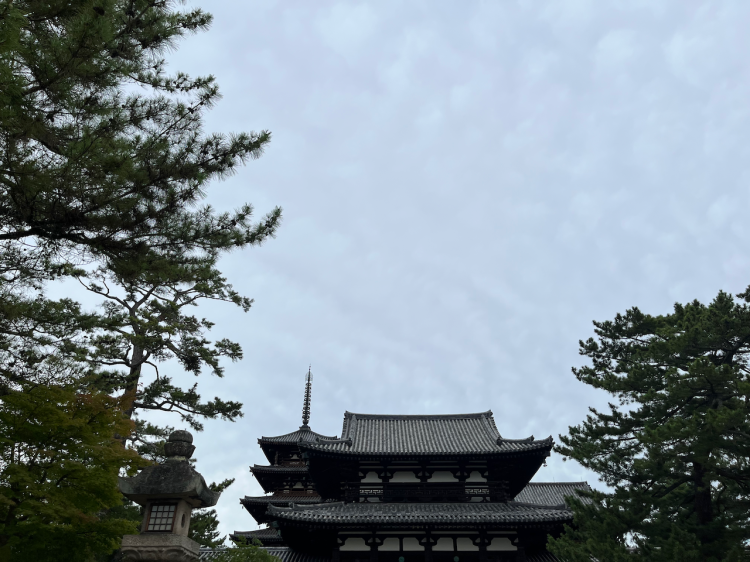
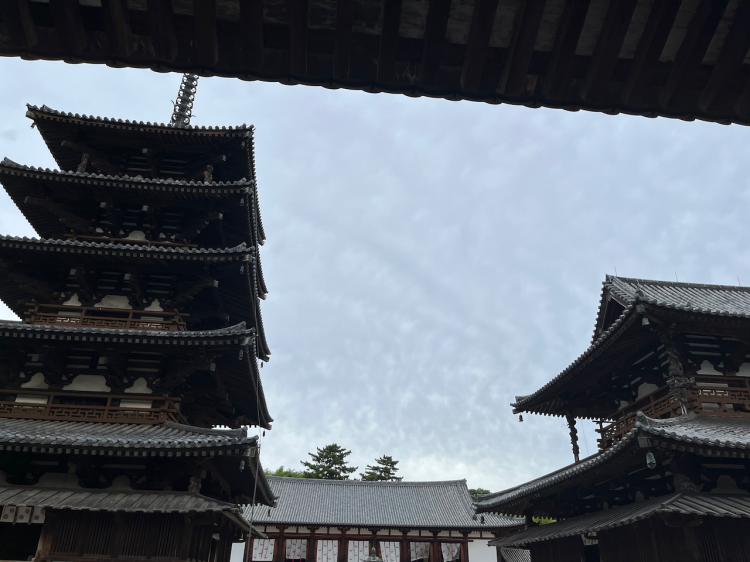
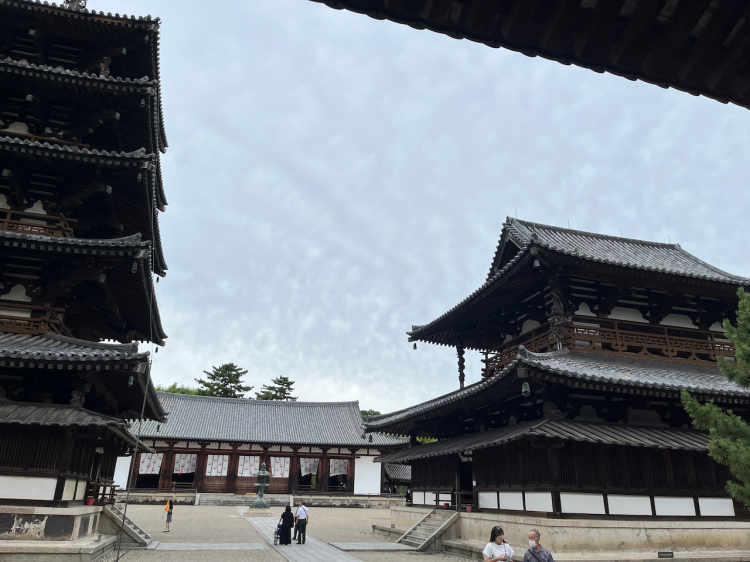
Because it was so hot, and so late on a weekday, there were very few people there, primarily a school field trip (in the photo above, you can see the teacher carrying an orange flag). To the left you can see a tall pagoda, which in Japanese is called a go-ju-no-tō (五重塔, lit. “five-storied tower”):3
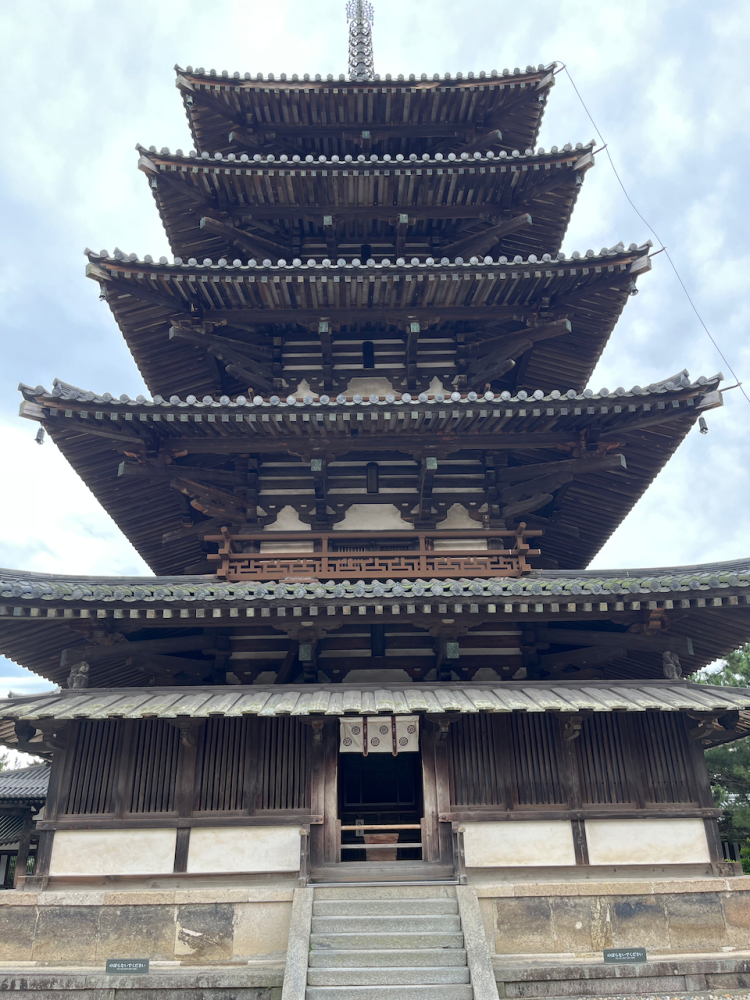
The pagoda above (English description here) is said to be one of the oldest still standing, and buried underneath may be some ashes or bones of the historical Buddha, Shakyamuni, himself.
To the right, the Golden Hall (kondō, 金堂):
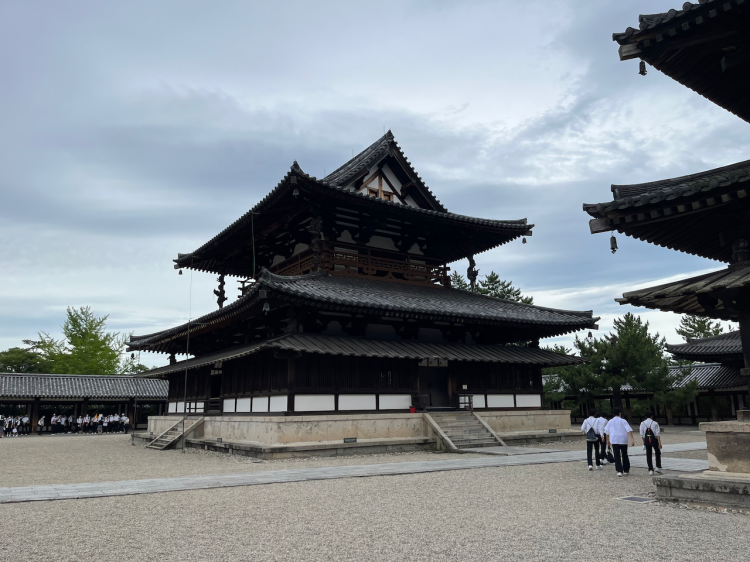
As the English description explains, this is one of the oldest, extant wooden buildings in Japan. Seeing the “triad” or “trinity” of Shakyamuni Buddha (photos here) enshrined there was amazing. I had often seen photos of it as an example of artwork of the period, but I honestly never imagined I’d see it face to face. I was definitely in awe.
Speaking of which, when people normally think of a trinity, they either think of The Matrix, or of the Holy Trinity in the Christian religion. However, Mahayana Buddhism often paired a particular Buddha with a pair of attendant Bodhisattvas into trinities of its own. Horyuji was unusual in having several such works of art, where most temples might have only one.
For example, in the photos above, you can see a building with white curtains over the entrance. That was the great lecture hall (daikōdō, 大講堂), where a trinity of the Medicine Buddha (photo here) and his two attendant Bodhisattvas was enshrined. I paid obeisance there to help with my gout, which was quite painful that day. I also took home special paper talisman (ofuda) the temple provided against Covid19.
Another statue that really stood out to me was the famous “Kudara Kannon”, a statue of the Bodhisattva Kannon either made in Baekje in the 6th century, or made by artisans imported from Baekje. You can see a photo of it here (scroll down a bit), but it was much taller than I expected. The Kudara Kannon was quite tall and slender, looking down over us, yet serenely beautiful too. It looked fragile, and yet had endured for countless centuries.
In the museum, I also saw an illustrated history of Prince Shotoku, the patron of Horyuji (and of Japanese Buddhism in general) from the 12th century:
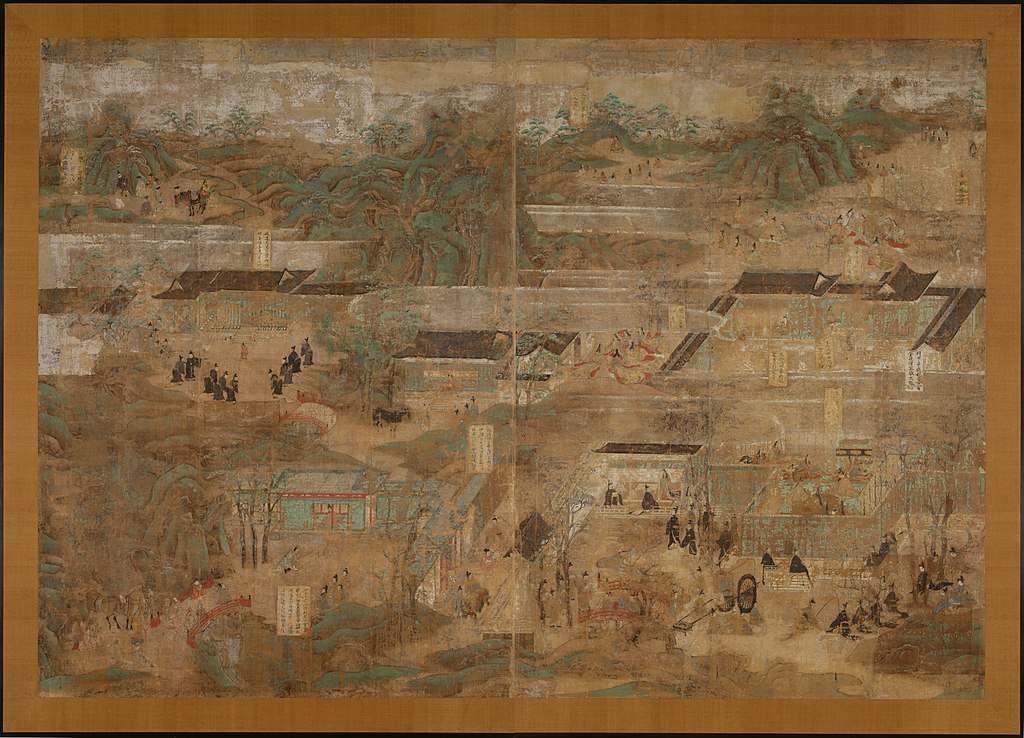
Someday I will write more about Prince Shotoku, because as a religious figure he is well-known in Japan, but not outside the country. He’s a fascinating figure, but also the his origin story is pretty fascinating too, and shows further fusion of Korean immigrant culture in Japan.
Anyhow, I really wish I could have done more justice to this visit, but the temple website in English is excellent, and the experience was very fascinating as an amateur historian, and Buddhist-nerd.
1 Baekje ultimately fell to Silla, unfortunately. There are plenty of excellent K-Dramas about this historical period in time, by the way. There are plenty of excellent K-Dramas in general, I would argue.
2 Because we were in the middle of nowhere after the temple closed, and no taxis around, getting back to our hotel required some help from locals, who showed us some local buses to use, plus a few transfers. In short: be mindful of the time, and how you get back to Nara if you go to Horyuji. That said, it was definitely worth the visit.
3 The term “pagoda” is something many Westerners are vaguely familiar with, but are unaware of the significance. Many Buddhist temples in antiquity (and sometimes even modern ones), keep a Buddhist “storehouse” of relics, sutras, etc. This is based on the ancient Indian stupa, where relics of Shakyamuni Buddha and his followers were housed, and served as pilgrimage spots. The term pagoda is possibly based on Chinese language, but definitely shows misunderstanding by early European visitors.
Discover more from Gleanings in Buddha-Fields
Subscribe to get the latest posts sent to your email.